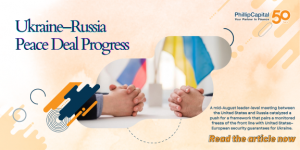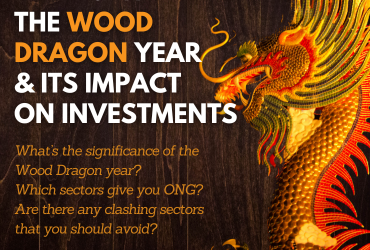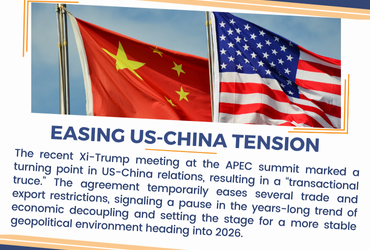
Where the talks stand now? A mid-August leader-level meeting between the United States and Russia catalyzed a push for a framework that pairs a monitored freeze of the front line with United States–European security guarantees for Ukraine. The concept emphasizes air and air-defence support, intelligence sharing, and a compliance-for-aid ladder—without United States ground forces. Russia has tabled opening demands that include recognition of control over parts of Donbas, a bar on NATO membership for Ukraine, and a ban on Western troops on Ukrainian soil. Ukraine rejects territorial concessions, insists on time-bound, enforceable guarantees, and wants a concrete blueprint before any leader-level meeting with Russia.
Roles now
United States: Acting as chief facilitator. Testing a guarantees package (NATO-style in effect, if not in name), keeping sanctions leverage, and nudging the parties toward a leader-level engagement once preconditions are credible.
European Union: Championing a ceasefire-first, sovereignty-safe path. Scaling ammunition and air-defence production, coordinating energy backstops, and preparing options for a European-led monitoring presence if a ceasefire emerges. EU institutions are also positioned to anchor reconstruction finance.
Ukraine: Holding red lines on territory and seeking robust, externally backed guarantees before politics. Open to a monitored freeze that protects civilians, infrastructure and grain-export corridors—provided enforcement is real.
Russia: Negotiating while applying military pressure to improve leverage; seeking limits on Ukraine’s alignments and a say over any Western guarantee architecture.
China: Calling for dialogue and promoting a China–Brazil track, while maintaining economic ties with Russia. Ukraine has signaled it does not view China as a credible security guarantor. Beijing’s priority appears to be stability that avoids secondary-sanctions risk and commodity volatility, rather than underwriting enforcement.
What has changed since mid-August? The United States and the European Union have shifted from concepts to concrete options for guarantees and monitoring; Russia hardened its opening bid; Ukraine clarified summit preconditions; and China has been pushed to the margins of any enforcement discussion. Net-net: progress on mechanics, but fundamentals remain far apart. The most realistic near-term outcome is incremental de-escalation—localized freezes, prisoner exchanges, and better protection of energy and grain routes—rather than a comprehensive peace.
Global Market Outlook & Strategy
Our base case is for risk premia to remain low. We remain neutral on global equities, as policy-driven uncertainty under US President Donald Trump continues to weigh on investors sentiments. However, we remain constructive on Asia Pacific ex-Japan equities, particularly in North Asia, supported by a weaker US dollar and a more dovish Federal Reserve. Potential easing by the Fed would give Asian central banks greater flexibility to lower interest rates, which in turn could provide further support to regional market sentiment.
We continue to prefer Malaysia, as it remains a laggard this year compared to other markets. While the MSCI Asia Pacific ex-Japan Index is now trading at 52-week highs amid renewed optimism, and both the U.S. and European markets are performing well, we see value in positioning in laggards like Malaysia that have yet to catch up. We maintain a neutral view on large-cap stocks due to balanced risk-reward and have shifted to bullish on small-caps as the recent market correction has created selective buying opportunities.
Phillip Capital Malaysia and our offerings
We reaffirm our belief that there are still opportunities in the market, and we maintain a discerning approach in choosing high-quality stocks for our portfolio. However, it is crucial to exercise caution and carefully select investment options to ensure the best risk-adjusted returns. By taking a vigilant and discerning approach, investors can potentially reap the benefits of the current market opportunities while minimising risks.
A noteworthy avenue for investors seeking diversification in their portfolio is through PhillipCapital Malaysia. PhillipCapital Malaysia offers multiple private mandate services managed by professional fund managers. By leveraging PhillipCapital Malaysia’s private mandate services, investors can enhance their resiliency, optimise portfolio performance, and navigate the complexities of the market with confidence.
We also offer both conventional and Shariah-compliant options to cater to the needs of all investors. For Malaysia’s mandates, we like:
- PMART/PMA Dividend Enhanced and/or PMART/PMA Dividend Enhanced ESG
Our PMART Dividend Enhanced and PMA Dividend Enhanced is an income-driven portfolio focused on high dividend-yielding equities. We apply the Dog of the Dow approach, screen and select top market cap stocks to minimise risk and ensure consistent performance. The portfolio is an equal weighting portfolio which reduces concentration risk and provides similar exposure to all clients, both initially and after rebalancing. We offer both conventional and Shariah investment options to cater to the diverse needs of our investors. Click here to learn more. We recently also introduced PMART/PMA Dividend Enhanced ESG Mandate as we remain dedicated to investing in ESG stocks given their stronger valuation and profitability.
- PMART/PMA ESG
Phillip Capital Malaysia offers discretionary portfolio that invests in stocks with high ESG ratings from the F4GBM and F4GBMS Indices, namely PMART and PMA ESG. There are both conventional and Shariah options available. To explore the companies in which both Conventional and Shariah ESG mandates invest, you can refer to the provided link.
- PMART/PMA Blue Chip and Opportunity
Our Blue-Chip portfolios primarily allocate our investments towards companies with large market capitalisations, while the Opportunity portfolios predominantly invest in companies with smaller market capitalisations. We also offer both conventional and Shariah-compliant options to cater to the needs of all investors.
Please click on the link to learn more or email us at cse.my@phillipcapital.com.my if you require any further information.
Disclaimer
The information contained herein does not constitute an offer, invitation, or solicitation to invest in any product or service offered by Phillip Capital Management Sdn Bhd (“PCM”). No part of this document may be reproduced or circulated without prior written consent from PCM. This is not a unit trust or collective investment scheme and is not an obligation of, deposit in, or guaranteed by PCM. All investments carry risks, including the potential loss of principal.
Performance figures presented may reflect model portfolios and may differ from actual client accounts’ performance. Variations in individual clients’ portfolios against model portfolios and between one client’s portfolio to another can arise due to multiple factors, including (but not limited to) higher relative brokerage costs for smaller portfolios, timing of capital injections or withdrawals, timing of purchases and sales, and mandate change (e.g., Shariah vs. conventional). These differences may impact overall performance.
Past performance is not necessarily indicative of future returns. The value of investments may rise or fall, and returns are not guaranteed. PCM has not considered your investment objectives, financial situation, or particular needs. You are advised to consult a licensed financial adviser before making any investment decisions.
While all reasonable care has been taken to ensure the accuracy and completeness of the information contained herein, no representation or warranty is made, and no liability is accepted for any loss arising directly or indirectly from reliance on this material. This publication has not been reviewed by the Securities Commission Malaysia.






